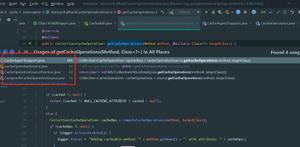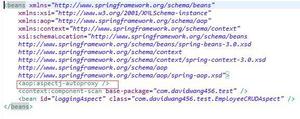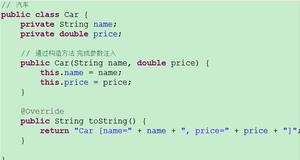spring Bean的作用域
本文内容纲要:spring Bean的作用域
在默认的情况下,Spring IoC容器只会对一个Bean创建一个实例,比如下面的测试:
AnnotationConfigApplicationContext context = new AnnotationConfigApplicationContext(ApplicationConfig2.class);RoleDataSourceService RoleService = context.getBean(RoleDataSourceService.class);
RoleDataSourceService RoleService2 = context.getBean(RoleDataSourceService.class);
System.out.println("RoleService == RoleService2:" + (RoleService == RoleService2));
这里我们通过类型两次从Spring IoC容器中取出Bean,然后通过==比较,这是一个位比较。换句话说,就是比较RoleService和RoleService2是否为同一个对象,经过测试它的结果为true。
在默认的情况下,Spring IoC容器只会为配置的Bean生成一个实例,而不是多个。
有时候我们希望能够通过Spring IoC容器中获取多个实例,比如Struts2(现在它的使用已经比较少了)中的Action(Struts2的控制层类),它往往绑定了从页面请求过来的订单。如果它也是一个实例,那么订单就从头到尾只有一个,而不是多个,这样就不能满足互联网的并发要求了。为了解决这个问题,有时候我们希望Action是多个实例,每当我们请求的时候就产生一个独立的对象,而不是默认的一个,这样多个实例就可以在不同的线程运行了,就没有并发问题了。关于这些是由Spring的作用域所决定的。
Spring提供了4种作用域,它会根据情况来决定是否生成新的对象。
•单例(singleton):它是默认的选项,在整个应用中,Spring只为其生成一个Bean的实例。
•原型(prototype):当每次注入,或者通过Spring IoC容器获取Bean时,Spring都会为它创建一个新的实例。
•会话(session):在Web应用中使用,就是在会话过程中Spring只创建一个实例。
•请求(request):在Web应用中使用的,就是在一次请求中Spring会创建一个实例,但是不同的请求会创建不同的实例。
从4种作用域可以看出,对于Struts2的Action而言,使用请求会合理一些。在4种作用域中会话和请求只能在Web应用中使用
代码清单:给RoleDataSourceServiceImpl声明原型
import com.ssm.chapter10.annotation.pojo.Role;import com.ssm.chapter10.annotation.service.RoleDataSourceService;
import org.springframework.beans.factory.annotation.Autowired;
import org.springframework.beans.factory.annotation.Qualifier;
import org.springframework.beans.factory.config.ConfigurableBeanFactory;
import org.springframework.context.annotation.Scope;
import org.springframework.stereotype.Component;
import javax.sql.DataSource;
import java.sql.Connection;
import java.sql.PreparedStatement;
import java.sql.ResultSet;
import java.sql.SQLException;
@Component
@Scope(ConfigurableBeanFactory.SCOPE_PROTOTYPE)
public class RoleDataSourceServiceImpl implements RoleDataSourceService {
@Autowired
@Qualifier("dataSource2")
DataSource dataSource = null;
// @Override
public Role getRole(Long id) {
Connection conn = null;
ResultSet rs = null;
PreparedStatement ps = null;
Role role = null;
try {
conn = dataSource.getConnection();
ps = conn.prepareStatement("select id, role_name, note from t_role where id = ?");
ps.setLong(1, id);
rs = ps.executeQuery();
while (rs.next()) {
role = new Role();
role.setId(rs.getLong("id"));
role.setRoleName(rs.getString("role_name"));
role.setNote(rs.getString("note"));
}
} catch (SQLException e) {
e.printStackTrace();
} finally {
/**********close database resources************/
try {
rs.close();
ps.close();
conn.close();
} catch (SQLException e) {
e.printStackTrace();
}
}
return role;
}
}
这是再测试两个对象并非同一个对象,因为我们将其声明为了原型,每当我们从Spring IoC容器中获取对象,它就会生成一个新的实例,这样两次获取就获得了不同的对象,于是比较就返回为false了。
本文内容总结:spring Bean的作用域
原文链接:https://www.cnblogs.com/ooo0/p/10981850.html
以上是 spring Bean的作用域 的全部内容, 来源链接: utcz.com/z/362393.html









